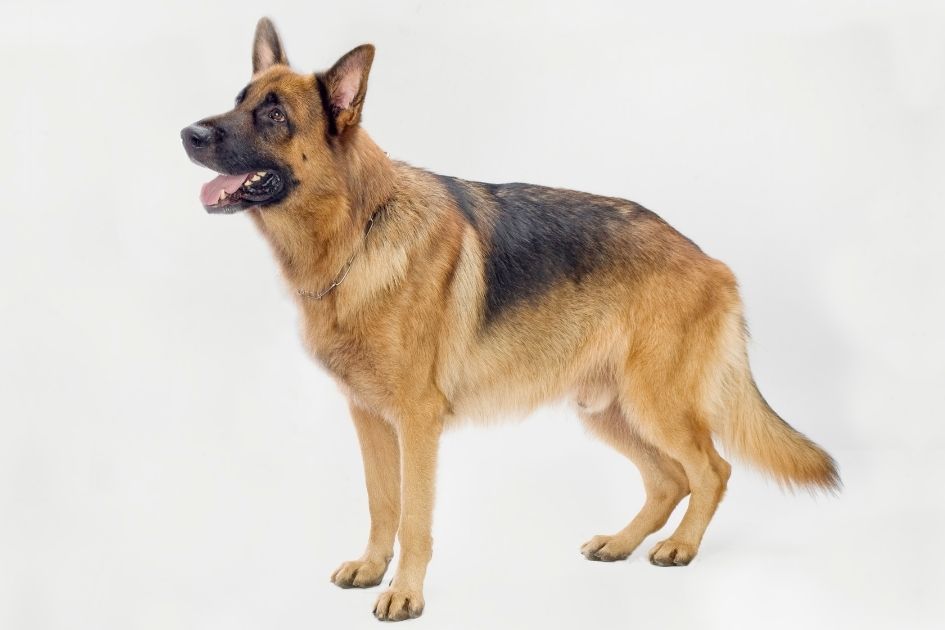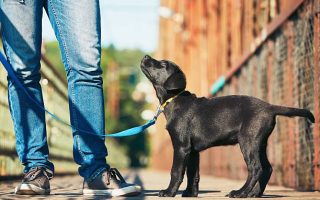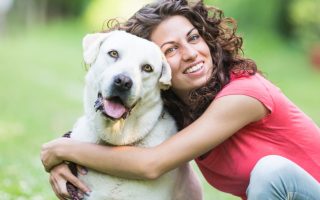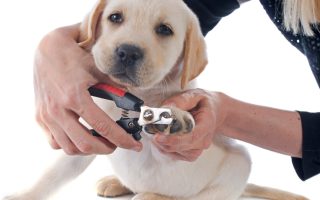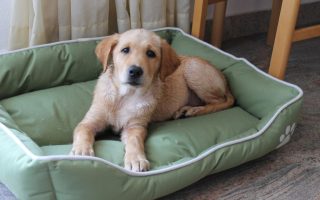If you’re worried about your Labrador Retriever reaching full size, don’t be. They are considered full-grown when they reach 3 years old, but they can keep growing labs stop growing and maturing until they’re 6 to 7 years old. However, this doesn’t mean that you shouldn’t train and socialize your pup starting at 8 weeks of age or sooner!
How can I tell if my Lab is overweight?
If your Lab is overweight, take a look at its ribs. If you can’t see them, it’s time to lose some weight. Also, be aware that Labs who are obese may develop arthritis at an earlier age and have shorter life spans than those with a healthy weight. Exercising regularly is important for dogs of all ages, but particularly for middle-aged dogs. But don’t force an overweight Lab to exercise; he will burn fewer calories as he gets older and could hurt himself by trying to keep up with younger pups.
What should I feed my Lab?
Labs stop growing at varying ages, depending on gender and lineage. Most labs stop growing by 3 years old. There is no exact time as each dog matures at a different rate but somewhere between 1 to 2 years of age Labs stop growing in height, weight, and length of legs and snout which varies from male to female. If your Lab is showing any characteristics should you worry that it might not be full-grown? Give him some space.
As he matures, your Lab’s physique will also change. He’ll reach a stage where his growth is concentrated in his torso and head. This doesn’t mean you can abandon his workout routine, however. Exercise is important for any dog to build strong muscles that can sustain him for long life. The active and exuberant Lab needs at least an hour of exercise per day, with more time spent on activities like swimming or running for bigger dogs.
At what age are Labradors fully grown?
The average Labrador Retriever weighs about 75 pounds when fully grown. However, it is not unusual for a Labrador to continue growing until they are three years old. Some Labradors will keep growing until they are four or five years old. On average, Labs stop growing by age 2.5 years but even after that they can keep adding muscle mass and fill out more. This usually means that an adult Labrador could weigh anywhere from 80-120 pounds if it kept growing past maturity. The most common reason people want to know when their dog will stop growing is that they want to know what size their dog will be as an adult and whether or not there will be any surprises down the road about behavior or physicality. Hopefully, you now have your answer!.

Why does my Labrador stop growing? This can be a source of anxiety for new dog owners. Unfortunately, there’s no specific reason why Labradors continue to grow as long as they do and some people worry that their dogs might have a condition called Large Dog Syndrome (LDS). While we don’t fully understand what causes LDS, it has nothing to do with a dog being Labrador. Labradors aren’t necessarily even affected by LDS at all; different breeds have been found to have higher incidences of it. It is believed that genetics is responsible for when do Labs stop growing, so in essence, they grow until they reach their full genetic potential based on their breed.
DO Labs grow taller after 6 months?
Labradors are a relatively slow-growing breed. Full-grown adults range from 23 to 24 inches in height, with males usually being slightly taller than females. Most Labs stop growing at about one year of age, although some may continue for another six months or so. Although Labradors don’t tend to be big dogs, they need plenty of room and should not be kept in apartments. How much space a Labrador will need depends on how large he becomes as an adult. Large dogs require a minimum amount of exercise and lots of socialization with other pets and people while they’re young puppies; without enough exercise and attention they’ll grow up to be rambunctious adolescents that could hurt themselves or become destructive if their energy isn’t channeled properly.
At what age do Labs calm down?
The Labrador Retriever was bred to retrieve the game. That’s a polite way of saying that he was bred to bite anything that moves and not let go. Labs are naturally curious, very energetic, and easily bored. If you don’t give him something productive to do, chances are that he’ll get into something destructive how to take care of a puppy like chewing your shoes or digging up your favorite flowers. To keep your Lab busy and out of trouble when you’re not home, plan daily outings with him so he gets plenty of exercise and attention throughout the day — and make sure you come home on time! A tired dog is usually a good dog!
So, when does that energy level peak? Most Lab owners report that their dog is at his most rambunctious between 6 months and 2 years of age. During these first few years, you should give your Lab plenty of opportunities to burn off its boundless energy. You’ll need to take him on regular exercise walks and trips to a dog park or off-leash beach area so he can run free with other dogs while you supervise them. Also, check out group training classes in your area they’re a great way for both you and your pup to get some socialization and exercise at once!

